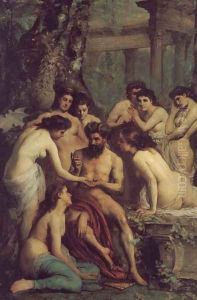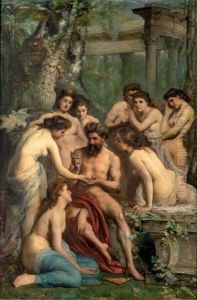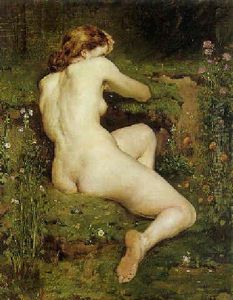Rodolph Julian Paintings
Rudolphe Julian (Rodolphe Julian) was a French painter and art organizer, born on June 26, 1839, in Lapalud, Vaucluse, France. He began his career as an artist but is most well-known for founding the Académie Julian in Paris in 1868. The Académie Julian was established as a private art school for students who wanted to prepare for the competitive exams of the official École des Beaux-Arts but was also unique because it admitted women as well as men, which was not common at the time.
Julian himself received little formal art training. Instead, he moved to Paris in his youth and began working at art studios, where he learned by observing other artists. He tried to enter the prestigious École des Beaux-Arts but was not accepted. Despite this setback, he was determined to be involved in the art world. Julian began by establishing a studio for practicing artists and then expanded his venture by establishing the Académie Julian, which quickly became a popular alternative to the École des Beaux-Arts.
The Académie Julian was known for its liberal atmosphere and for providing training in a variety of styles, which was quite attractive to a diverse body of students. Under Julian's leadership, the academy attracted many aspiring artists from around the world, including a significant number of Americans and women, who were often excluded from formal art education. Notable instructors at the Académie Julian included painters such as William-Adolphe Bouguereau, Jean-Paul Laurens, and Tony Robert-Fleury.
Rudolphe Julian was not just an educator; he was also an artist, although his works have not received the same level of recognition as those of some of his contemporaries or students. He was known to exhibit at the Salon, which was the official art exhibition of the Académie des Beaux-Arts in Paris. Julian's legacy, however, lies in his contribution to art education and the opportunities he created for artists who were often marginalized by the traditional academic system.
He died on February 27, 1907, leaving behind the Académie Julian as a testament to his impact on the art world. The Académie Julian continued to operate after his death, eventually merging with the École des Beaux-Arts in 1968. The school played a significant role in the development of young artists during the late 19th and early 20th centuries and is often remembered for its progressive approach to art education and for fostering the talents of numerous artists who would go on to achieve international fame.


